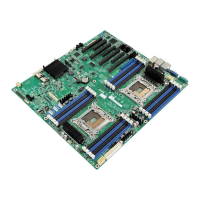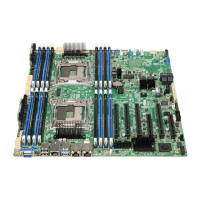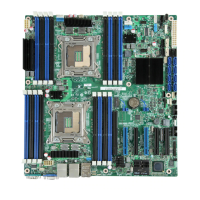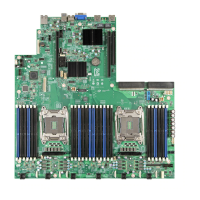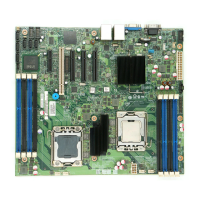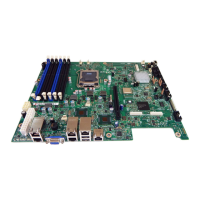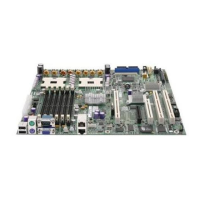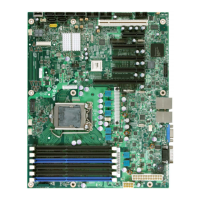System Security Intel® Server Board S2600CO Family TPS
50 Revision 1.4
Intel order number G42278-004
Table 14. Setup Utility – Security Configuration Screen Fields
Setup Item Options Help Text Comments
TPM State* Enabled and
Activated
Enabled and
Deactivated
Disabled and
Activated
Disabled and
Deactivated
Information only.
Shows the current TPM device
state.
A disabled TPM device will not
execute commands that use TPM
functions and TPM security
operations will not be available.
An enabled and deactivated TPM
is in the same state as a disabled
TPM except setting of TPM
ownership is allowed if not
present already.
An enabled and activated TPM
executes all commands that use
TPM functions and TPM security
operations will be available.
TPM
Administrative
Control**
No Operation
Turn On
Turn Off
Clear Ownership
[No Operation] - No changes to
current state.
[Turn On] - Enables and activates
TPM.
[Turn Off] - Disables and deactivates
TPM.
[Clear Ownership] - Removes the
TPM ownership authentication and
returns the TPM to a factory default
state.
Note: The BIOS setting returns to
[No Operation] on every boot cycle
by default.
5.3 Intel
®
Trusted Execution Technology
The Intel
®
Xeon
®
Processor E5-4600/2600/2400/1600 Product Families support Intel
®
Trusted
Execution Technology (Intel
®
TXT), which is a robust security environment. Designed to help
protect against software-based attacks, Intel
®
Trusted Execution Technology integrates new
security features and capabilities into the processor, chipset and other platform components.
When used in conjunction with Intel
®
Virtualization Technology, Intel
®
Trusted Execution
Technology provides hardware-rooted trust for your virtual applications.
This hardware-rooted security provides a general-purpose, safer computing environment
capable of running a wide variety of operating systems and applications to increase the
confidentiality and integrity of sensitive information without compromising the usability of the
platform.
Intel
®
Trusted Execution Technology requires a computer system with Intel
®
Virtualization
Technology enabled (both VT-x and VT-d), an Intel
®
Trusted Execution Technology-enabled
processor, chipset and BIOS, Authenticated Code Modules, and an Intel
®
Trusted Execution
Technology compatible measured launched environment (MLE). The MLE could consist of a
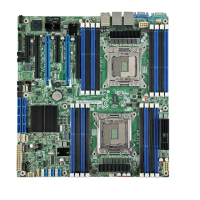
